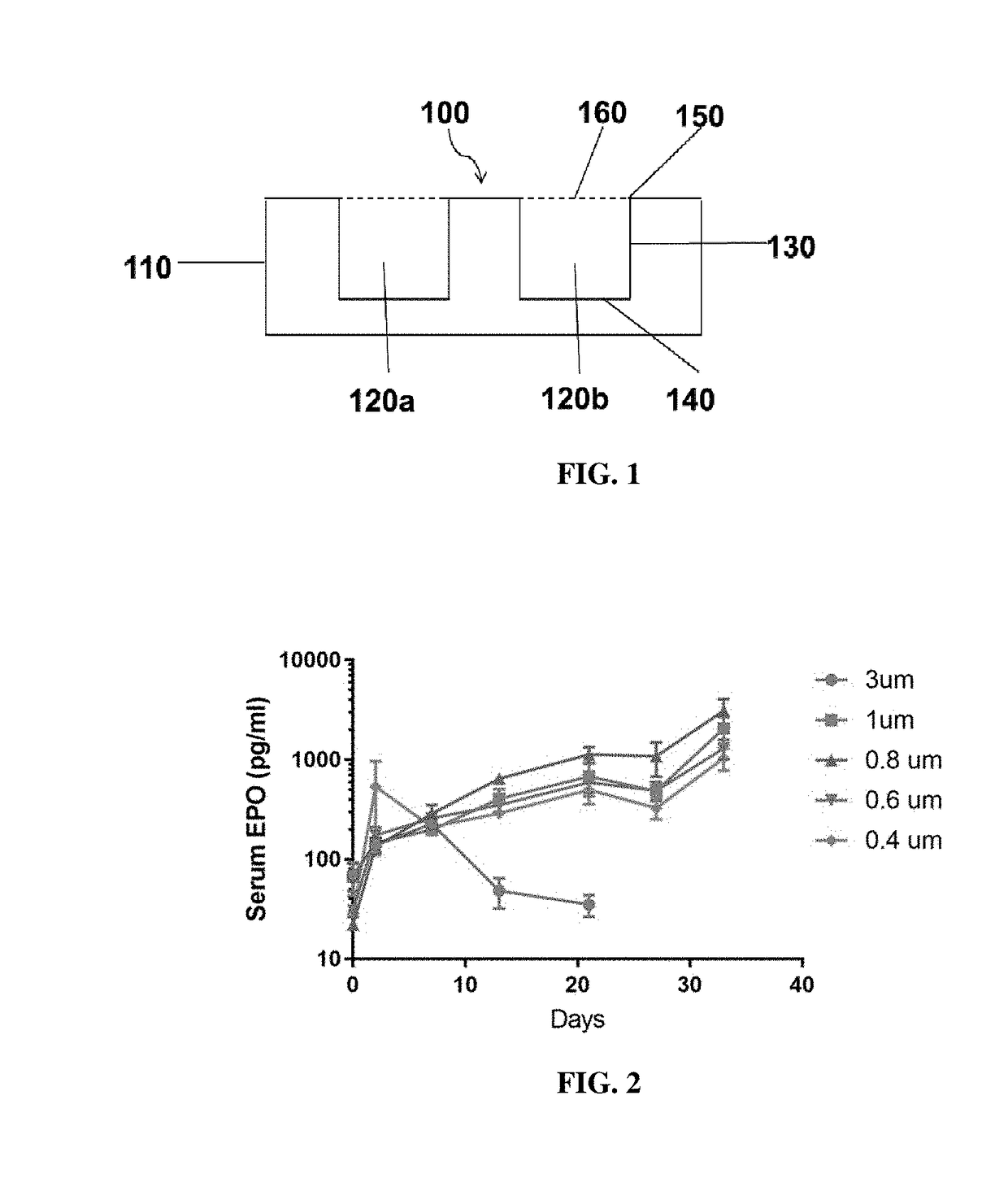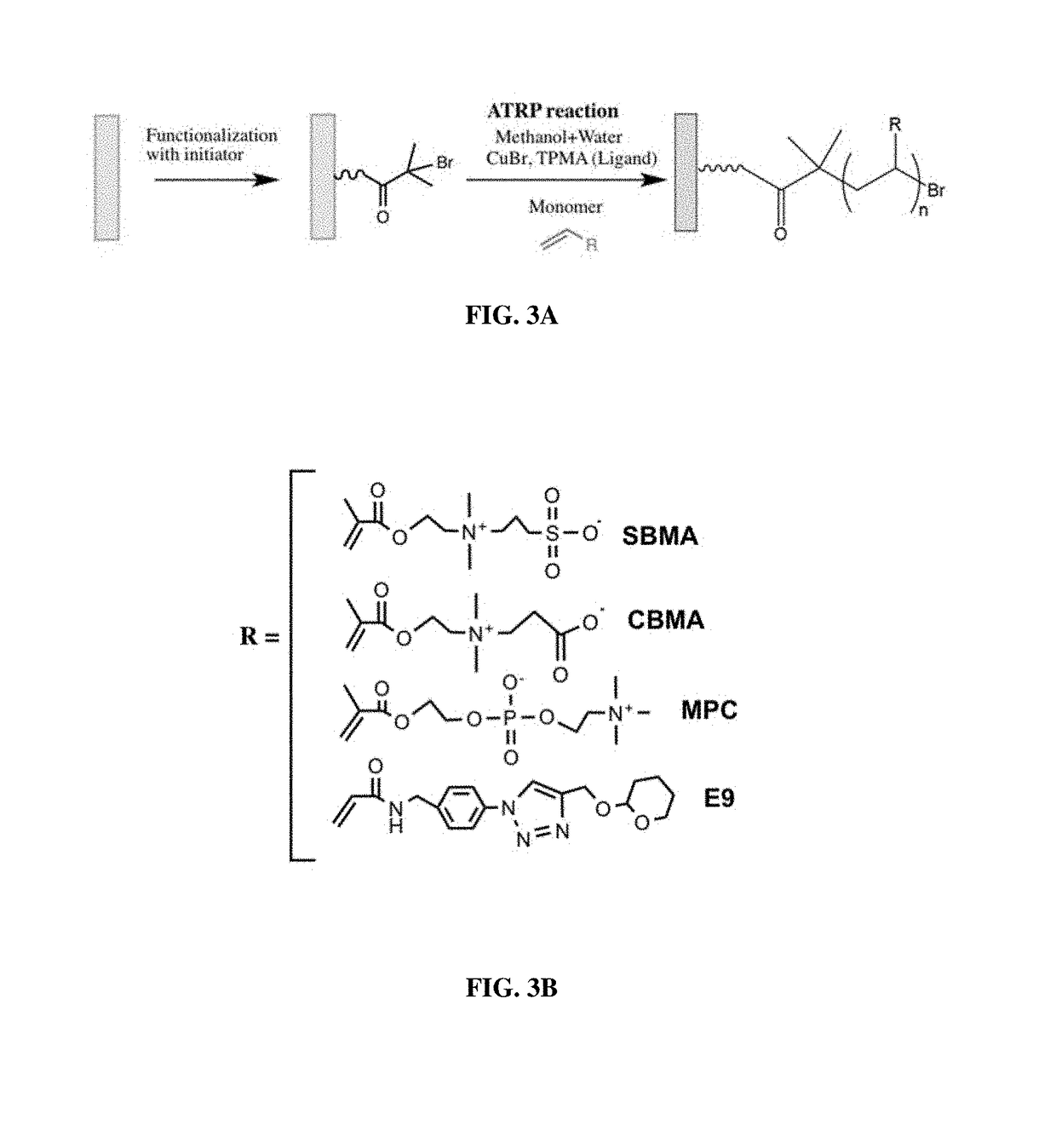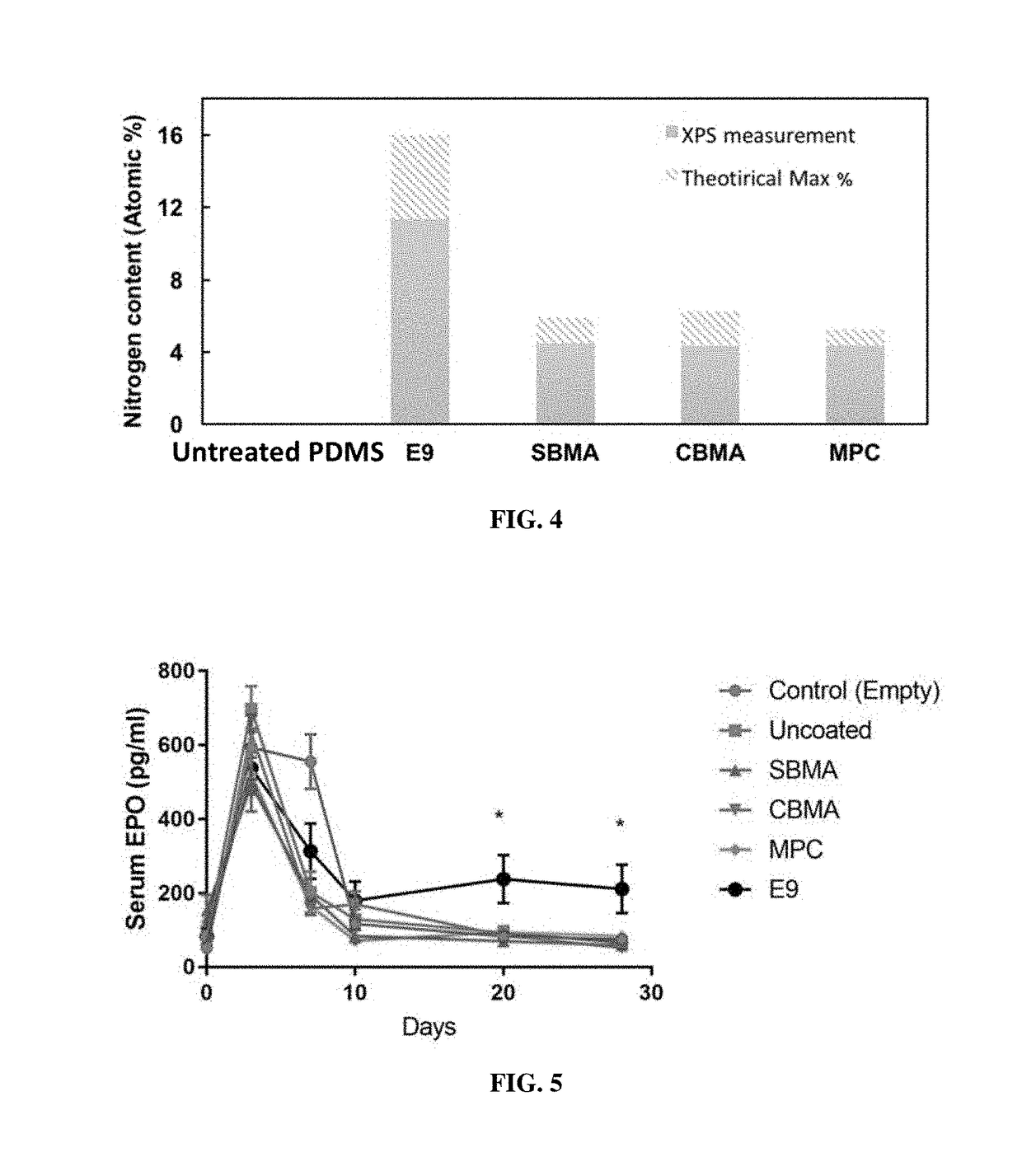Biocompatible microfabricated macrodevices for transplanting cells
a micro-fabricated, cell technology, applied in the direction of prosthesis, pharmaceutical delivery mechanism, medical preparations, etc., can solve the problems of increasing the risk of transplant failure, organ damage, infection, prolonging cell response time, etc., to facilitate secretion, enhance the diffusion of nutrients, and superior
- Summary
- Abstract
- Description
- Claims
- Application Information
AI Technical Summary
Benefits of technology
Problems solved by technology
Method used
Image
Examples
example 1
Biocompatible Macrodevices for Transplanting Cells
Materials and Methods
[0319]The body of a macrodevice was micro-fabricated using poly(dimethylsiloxane) (PDMS). A polycarbonate track-etched membrane was attached to one side, the top side, of a PDMS micro-fabricated body using aminosilane chemistry. Different macrodevices were generated by attaching a porous membrane with pore size of 0.4 μm, 0.6 μm, 0.8 μm, 1.0 μm, or 3.0 μm to the micro-fabricated body. A human cell line (HEK 293) was engineered to secrete a cytokine mouse-erythropoietin (EPO), and cells from this cell line were encapsulated in one or more compartments in the micro-fabricated body of the macrodevices with these different porous membranes and the macrodevices were then transplanted into the IP space of Balb / c mice. Serum EPO levels in the mice were monitored.
[0320]After five weeks, implanted macrodevices containing porous membranes of various pore sizes were retrieved from IP space of blab / c mice, and stained for ac...
example 2
Long-term Survival of Islets (Rat) in STZ-Diabetic C57BL6 Mice
[0332]Materials and methods
[0333]Rat islets were encapsulated in THPT (E9) coated macrodevices described in Example 1 and implanted in the IP space of STZ diabetic C57BL / 6 mice. The blood glucose (BG) was monitored weekly, FIG. 12A.
[0334]Results
[0335]The BG measurements show that the THPT coated macrodevices cured mice for longer periods of time in comparison to uncoated macrodevices (n=5). A combined cure curve from two separate experiments (n=10 for THPT, n=8 uncoated) shows a median cure for 75 days in case of THPT devices and 19.5 days for uncoated macrodevices, FIG. 12B.
PUM
| Property | Measurement | Unit |
|---|---|---|
| height | aaaaa | aaaaa |
| height | aaaaa | aaaaa |
| distance | aaaaa | aaaaa |
Abstract
Description
Claims
Application Information
 Login to View More
Login to View More - R&D
- Intellectual Property
- Life Sciences
- Materials
- Tech Scout
- Unparalleled Data Quality
- Higher Quality Content
- 60% Fewer Hallucinations
Browse by: Latest US Patents, China's latest patents, Technical Efficacy Thesaurus, Application Domain, Technology Topic, Popular Technical Reports.
© 2025 PatSnap. All rights reserved.Legal|Privacy policy|Modern Slavery Act Transparency Statement|Sitemap|About US| Contact US: help@patsnap.com



